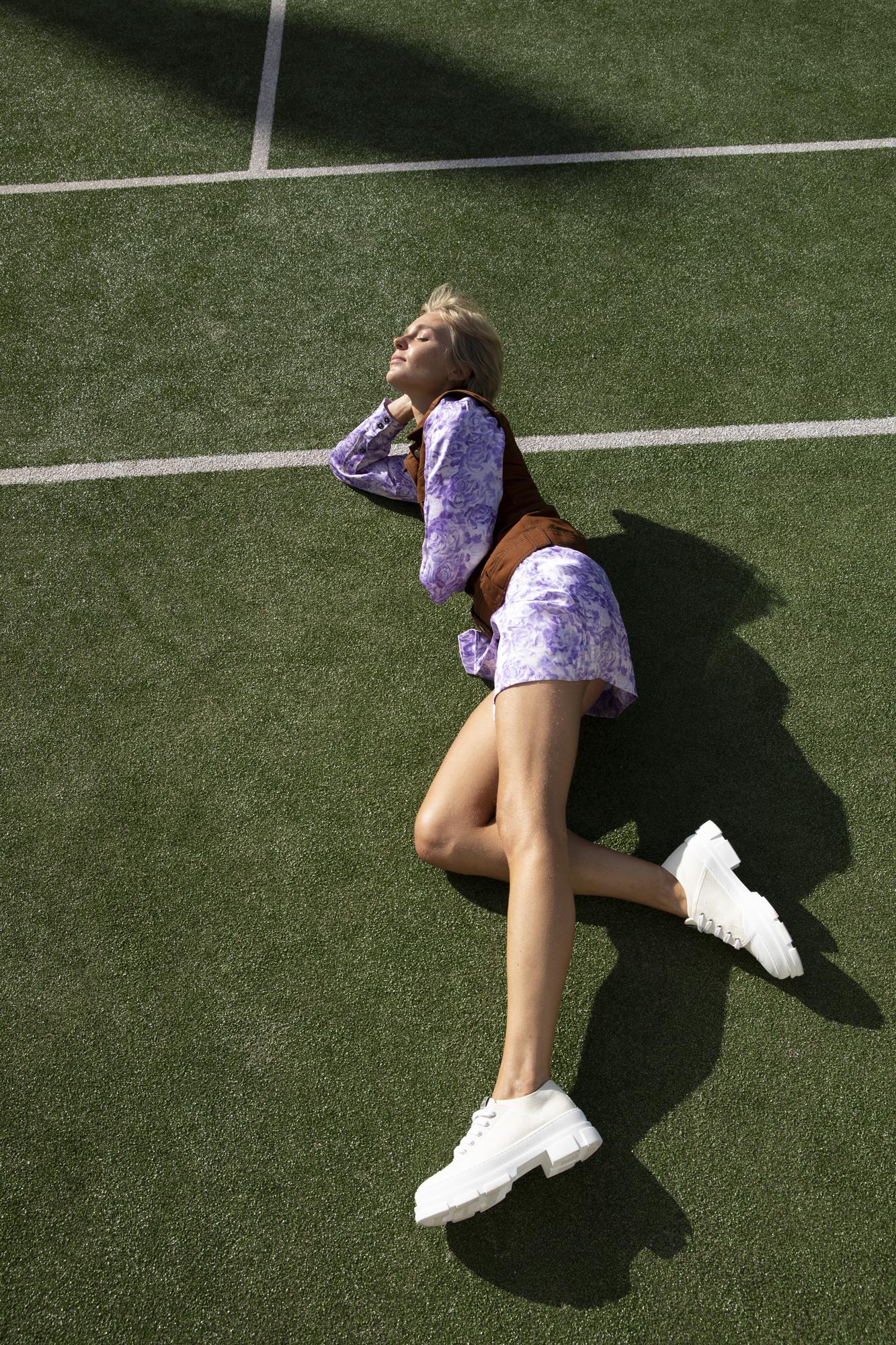
Can a company built on newness be responsible?
GANNI
Just like other popular fashion brands, GANNI is constantly creating new collections to satisfy consumer demand. But acting responsibly is equally important.
When Nicolaj and Ditte Reffstrup took over GANNI in 2009, they wanted to create Scandi style 2.0. Today, GANNI has grown into an international fashion brand that is represented in over 600 retailers worldwide and has more than 25 stores globally. Having worked with corporate responsibility for many years, the SDG Accelerator program was a welcomed opportunity to take things to the next level, Nicolaj Reffstrup says:
"I actually have a tech background while Ditte is the designer. What the tech world taught me is that you should always strive to be agile and dynamic when building your organisation. That business philosophy therefore, has guided us from the very beginning. We are stubborn on vision, flexible on detail, as Jeff Bezos puts it. We operate with a flat structure, where everyone is focused on creating value."
GANNI has worked to integrate sustainability into their value chain for a long time. Yet, Nicolaj Reffstrup admits that he is not a fan of the word itself:
"Since we are a fashion brand driven by an industry that is entirely built on newness, we try not to use the word sustainable. We do however, see it as our moral obligation to be transparent, honest and responsible even if we cannot be 100 percent sustainable. The last thing we want to do is to be successful at the expense of others."

As part of the SDG Accelerator programme, GANNI initially set out to create a new low-impact collection. The ambition level and abundance of new ideas and visions, however, prompted the company to create a whole new sustainability lab, Nicolaj Reffstrup explains:
"We have worked with the idea of developing a so-called guilt-free clothing collection for a long time. Upon starting the process, we soon realised that we had so many thoughts and visions that we would need a whole separate space where we could experiment more freely, away from the daily routines of running a fashion business. This space is now called the GANNI Lab. We are extremely excited to see where it will take us."
One of the reasons that sustainability is still a major challenge in the fashion industry, is the level of complexity of garment production, Nicolaj Reffstrup explains:
"There are so many stages in producing of a single piece of clothing, which makes it a complex procedure. There is the raw material stage where fibres are either grown or extracted from fossil fuels and then processed into workable fibres. Then there are the mills that spin and dye these fibres into yarn, which are later knit or woven into fabric, all of which usually take place in multiple locations. Next up is the actual production of the garment.
Since 79% of our CO2 footprint comes from the materials we use in our production, choosing the right fabric has a huge impact on our overall footprint. In the next phase, decisions about design and production affect how easy or difficult it will be to recycle and/or reuse the product at the end of its life. The final phase involves decisions about packaging, logistics, sales, use, and the final closing of the loop by collecting and recycling the garments."
As a result of participating in the SDG Accelerator, GANNI is now completely rethinking its entire value chain in the new low-impact collection, trying to find the most sustainable solutions available within the industry. This also involves asking the difficult questions. Despite the challenges lying ahead, GANNI is committed to launching its first low-impact collection by the end of 2020, says Nicolaj Reffstrup:
"So far, we have mapped the entire supply chain, the design team has done multiple workshops on designing for circularity, and we have sourced responsible materials and yarn mills. Some of the cool new materials include recycled wool, recycled and organic cotton, and closed loop viscose. By switching to these raw materials, we are expecting to see a 6090 percent reduction in both water use and CO2 emissions, according to the Higg Index. We will surely make mistakes along the way, and we expect the learning curve to be steep, but we have the commitment, resources and determination to succeed."
Read more about GANNI here.
SDG 12.2
GANNI is aming at achieving sustainable management and efficent use of natural resources by 2030, following their SDG goals.
Low-impact
By the end of 2020, GANNI launched their first low-impact clothing collection.
Owners
The company has been run by Ditte and Nicolai Reffstrup since its beginning in 2009
Purpose
GANNI makes contemporary, easy-to-wear fashion for women.
25+ stores
GANNI has more than 25 concept stores in Scandinavia, and the company is represented through 600+ retailers worldwide.
100 employees
GANNI has about 100 employees, working at the company's headquarters in Copenhagen, Denmark.

 Locations
Locations